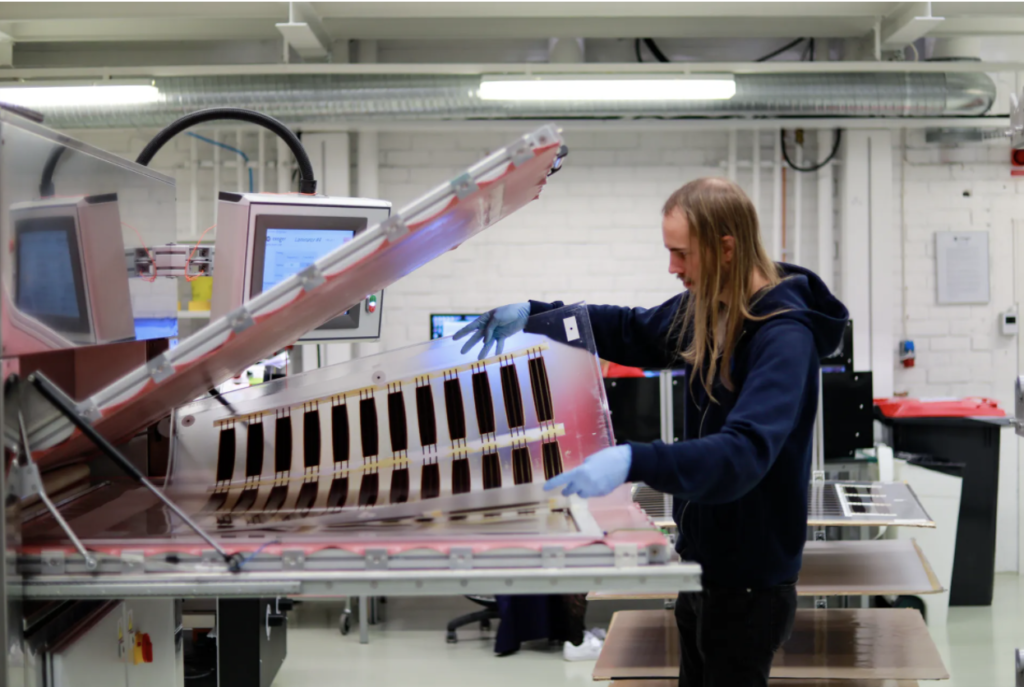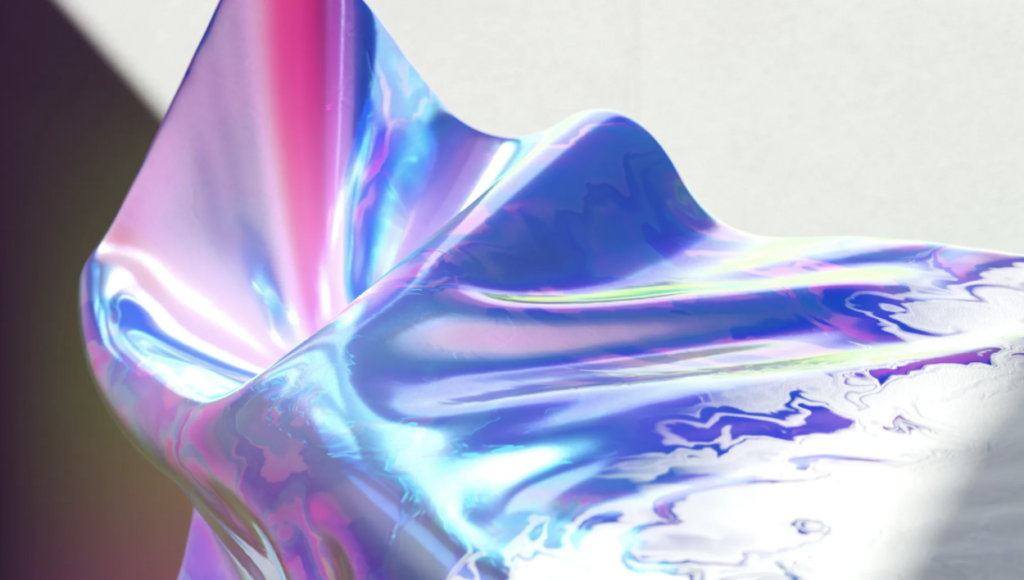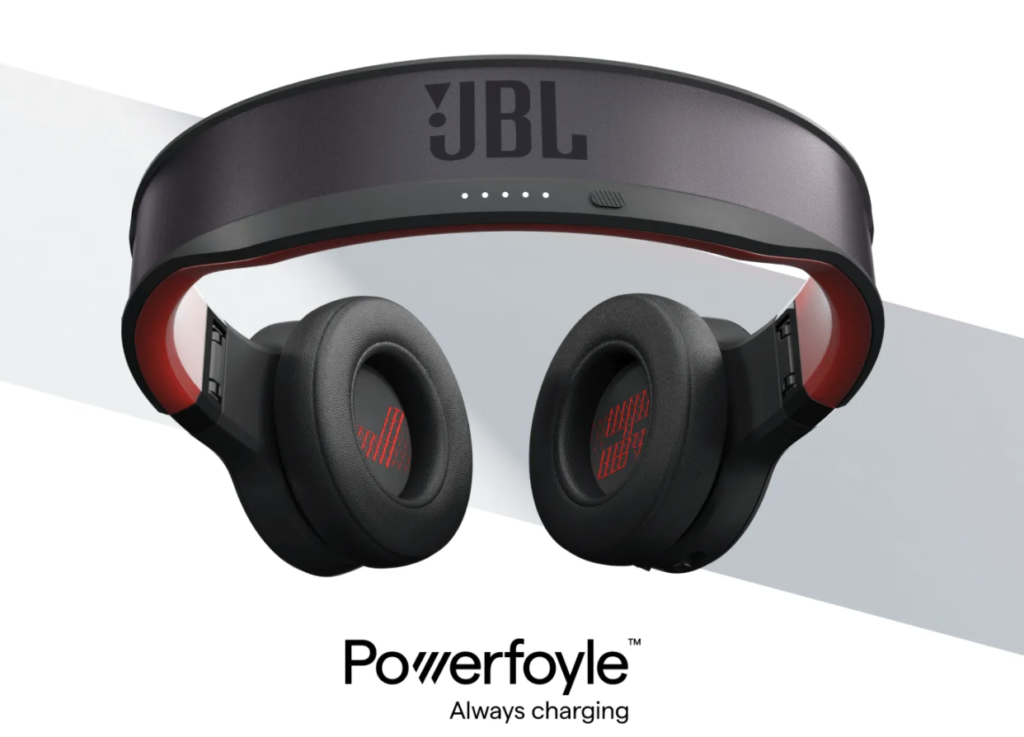Solar Powered Fabric Has Arrived
This screen printed fabric will soon provide solar power for your headphones, bags and more. Swedish carbon positive start-up Exeger is first partnering with JBL to release self-charging headphones, as well as plenty more smart products

This screen printed fabric will soon provide solar power for your headphones, bags and more.
Swedish carbon positive start-up Exeger is first partnering with JBL to release self-charging headphones, as well as plenty more smart products that will transform how electronics fit into our everyday lives.
The CEO of Swedish start-up Exeger, Giovanni Fili, has been working on solar cell material for over a decade, and now, the results of his work are about to mark a change in our everyday use of electronics. His unique, patented invention is called Powerfoyle, a screen printed fabric that uses solar and indoor light (anything from low ambient to strong industrial light) to recharge devices. The Exeger factory in central Stockholm is the only place in the world that screen prints solar cells, and is the world’s largest for making indoor solar cells. His recent collaboration with electronics brand JBL has spawned the first real-life product to see its material work: a pair of wireless, self-charging headphones called Reflect Eternal, due to be released later this year – though its already sold out on a limited pre-sale campaign on Indiegogo.
The Powerfoyle fabric is a stack of extremely thin layers, some less than 100 atoms thick, screen printed on a flexible plastic sheet. The layers are sealed with plastic, making it waterproof and durable, and the top layer can be textured to mimic leather or other types of surface – for example, the company has also produced a backpack that looks like leather, but is entirely made from Powerfoyle, with a power bank integrated into the bag so devices can be charged inside, while you’re going about your day.
“When the layers of nanomaterial are exposed to indoor and outdoor light, it mimics the natural principle of photosynthesis and generates electricity to power devices and batteries,” explains Exeger’s chief design officer Marcus Von Euler. The process of printing, he says, is “basically the same as printing a T-shirt combined with a laminator, but a very high tech robotised version”. The manufacturing technique uses zero emissions and is non-toxic, and allows for creative potential in terms of dimension, pattern, shape, embossing and incorporating logos and graphics.
At the moment, the brand is working on overcoming restrictions to the material. “We can’t do double curved surfaces yet,” says Von Euler, “but as long as its single curved, we’re fine. We’re working on it. Coloured cells for mass production in dark hues are just around the corner, but right now you can choose any colour as long as it’s black.”
The partnership with JBL is putting Powerfoyle on the map, and is one of many interested audio brands, Von Euler says, which want to remove the pesky charging problem of wireless headphones – arguably the major aspect holding back potential customers. The company is working with many of the biggest companies in the electronics market, as well as other sectors such as safety and sport, developing products like smart ski and bike helmets for Swedish brand POC. It is also developing the material’s reaction to very bright outdoor sunlight and very dim indoor light, to work for items like indoor remote controls.
“The vision is to wrap the world in Powerfoyle and totally replace non-sustainable dirty energy with non-toxic, non-obtrusive, hidden solar cell technology,” Von Euler concludes. “My long term vision is that when you renovate your home, after you have removed the power sockets and painted the wall you don’t put them back. Personally I’m in it for the sake of the planet and the future for our kids, and my drive is to make sure the cell can be integrated in ways to enhance the look and feel of the products and adding convenience to the users’ experience. Enhanced experience without any compromise on the aesthetics.”
Via It’s Nice That.
 English
English









